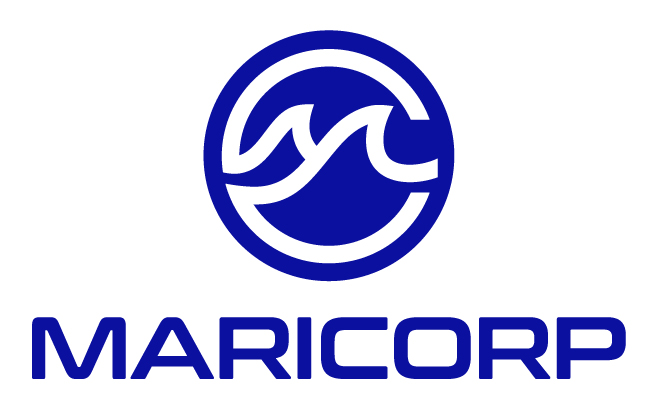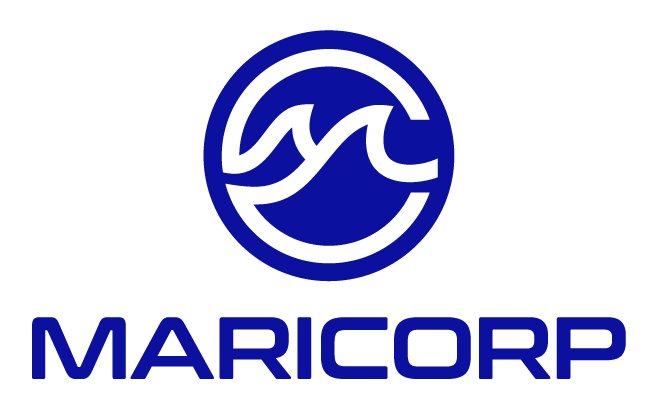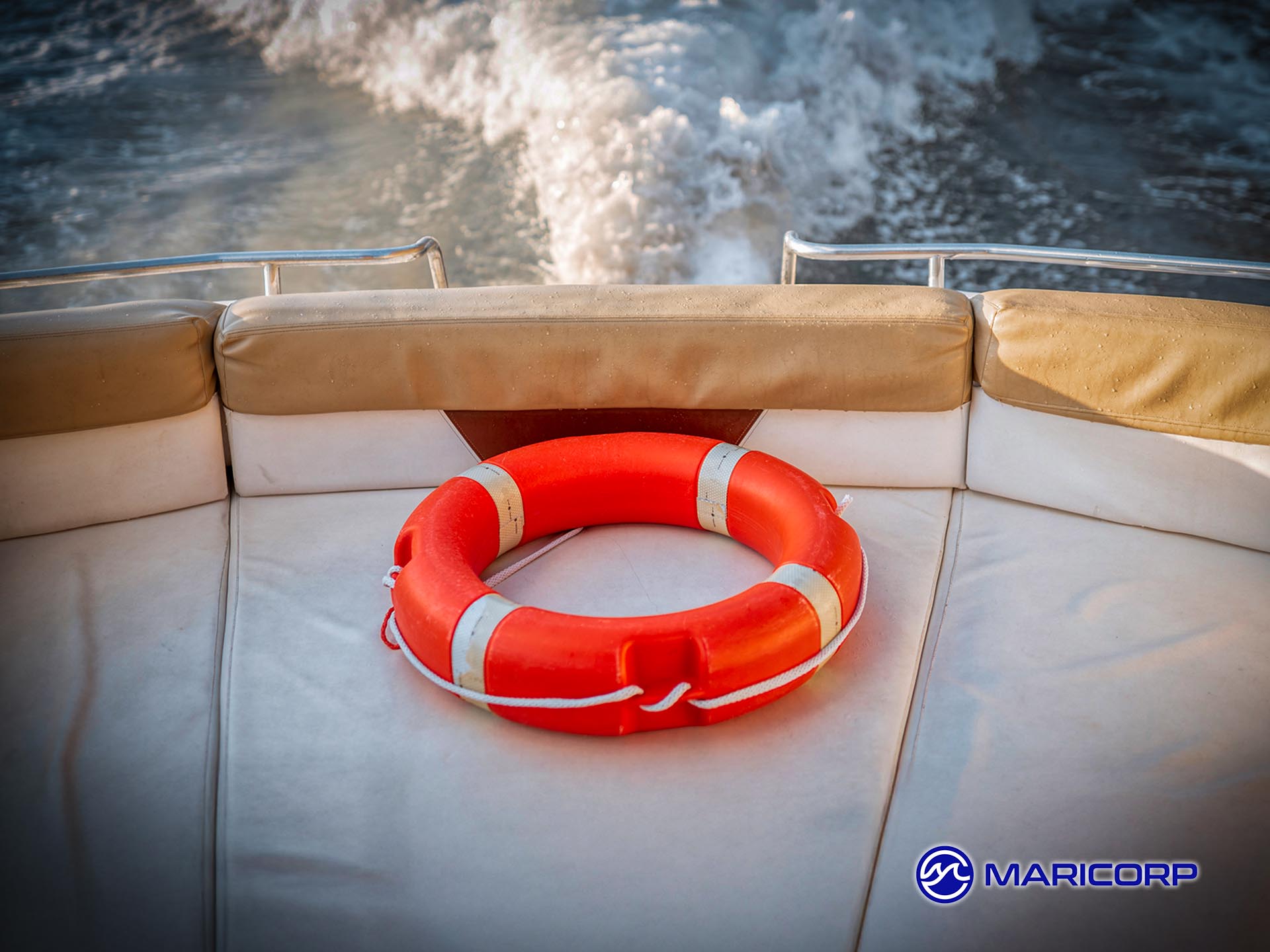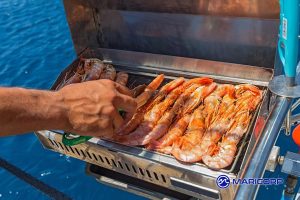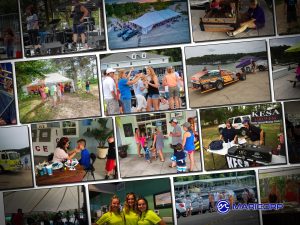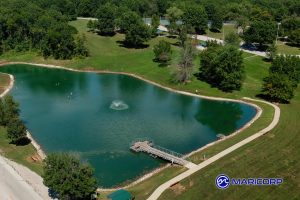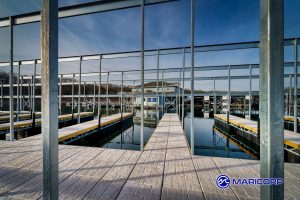Open Boating Carbon Monoxide Poisoning
Invisible Danger: Preventing Carbon Monoxide Poisoning in Open-Air Boating
Carbon monoxide (CO) is an odorless, colorless gas that can quickly build to dangerous levels around running engines—even in open, outdoor environments. While many associate CO poisoning with enclosed cabins or winter boating, the risk in open-air situations is just as real—and often less recognized.
Tragically, several young lives have been lost to CO exposure in recent years while boating. Among them was Maddie, a young girl who died after carbon monoxide accumulated near the swim platform of her family’s boat—an incident that initially seemed impossible given the outdoor setting. Her story, along with those of others, is featured in the Waves of Hope campaign by the National Safe Boating Council, launched to raise awareness of hidden dangers on the water.
For marina operators, boating professionals, and recreational boaters alike, understanding how CO behaves—and how to prevent its buildup—can save lives.
How Carbon Monoxide Builds Up in Open Boats
CO is produced anytime fuel burns, such as in gasoline or diesel engines, onboard generators, or even portable stoves. In boats, the most common sources include:
- Main propulsion engines
- Generator exhausts
- Auxiliary motors
- Idling engines at docks or marinas
Unlike smoke or steam, CO has no smell or color. In the right wind conditions—or lack thereof—it can concentrate in areas such as:
- Swim decks or transoms near exhaust ports
- Cockpit areas with minimal ventilation
- Under bimini tops or canvas enclosures
- Docked vessels running engines in still air
According to the Centers for Disease Control and Prevention (CDC), CO poisoning on boats can occur in just a few minutes. Even open-air decks, especially on houseboats or sport cruisers, can trap CO in “station wagon effect” eddies behind the vessel when at slow speeds or when idling.
Recognizing CO Poisoning Symptoms
Symptoms of CO poisoning are easy to miss. They mimic heat exhaustion, dehydration, or motion sickness—all common on a summer boating trip. Early signs include:
- Headache
- Dizziness
- Nausea
- Confusion or fatigue
- Shortness of breath
In higher concentrations, CO exposure can cause unconsciousness, seizures, or death—especially if victims are near water and unable to swim or call for help.
The U.S. Coast Guard Boating Safety Division notes that some victims lose consciousness and fall overboard before any visible distress occurs.
Prevention Strategies for Boaters
There are simple but critical steps that boaters can take to minimize the risk of CO exposure. These should become part of every vessel’s regular operation routine.
- Never Idle With Swimmers Near the Stern
One of the most dangerous practices is running the engine while people are on the swim platform or in the water near the stern. CO can collect in this area and reach fatal levels quickly, especially with engines idling.
Educate boat guests and family members that it’s not safe to linger near exhaust outlets—regardless of wind or visibility.
- Install a CO Detector
Every enclosed or semi-enclosed space onboard should have a marine-rated CO detector. Modern units are small, battery-powered, and approved for marine use.
Some newer boats come equipped with detectors in sleeping and engine areas, but they should be tested regularly. The American Boat and Yacht Council (ABYC) sets installation standards and safety requirements for marine CO alarms.
- Avoid Backdrafting Situations
Keep canvas covers, bimini enclosures, and windshields properly ventilated. When traveling at low speeds or running into a headwind, exhaust can be pulled back into the cockpit or deck areas—known as the “station wagon effect.”
Boaters should be aware of their positioning relative to wind direction, nearby vessels, and exhaust sources.
- Maintain Engines and Exhaust Systems
Leaks or malfunctions in the exhaust system increase the risk of CO entering living areas or gathering behind the boat.
Conduct mid-season engine checks and regularly inspect exhaust hoses, clamps, and mufflers. Marina staff can encourage routine service by offering inspection promotions or partnering with mobile marine mechanics.
- Limit Generator Use in Confined or Docked Settings
If generators must be used while docked or anchored, ensure they’re placed far from cabin intakes or dock structures. Use portable ventilation fans if needed and consider notifying nearby boaters.
The National Park Service reports that houseboat generator exhaust has been a leading cause of CO-related fatalities in recreational settings.
What Marinas Can Do
Marina owners and operators are in a strong position to promote safe boating practices—particularly around the dock and fuel areas where engines are often idling or being serviced.
- Post CO Warning Signage at fuel docks, pump-out stations, and along main walkways.
- Offer educational handouts on boating CO safety at check-in, especially for transient boaters.
- Train staff to recognize the signs of CO exposure and respond quickly.
- Include CO safety in new customer orientation materials or boater welcome packets.
Some marinas go further by integrating CO awareness into National Safe Boating Week or their own mid-season safety reviews.
Honoring Victims by Raising Awareness
The Waves of Hope campaign was launched by the National Safe Boating Council to share the real stories behind boating tragedies – including those caused by carbon monoxide.
Maddie’s story is one among many. She was a healthy, active young girl who loved boating with her family. After exposure to carbon monoxide near the back of the vessel, she passed out and entered the water without warning. By the time her absence was noticed, it was too late to save her. Her story has since helped lead awareness efforts nationwide.
By acknowledging these losses and sharing these stories, marinas and boating professionals can help ensure other families are spared the same heartbreak. The campaign’s goal is not just remembrance, but prevention.
Making Safety Part of the Routine
Carbon monoxide may be invisible, but its impact is devastating—and preventable. Boaters and marina teams that stay alert, educate others, and make safety part of everyday operations are helping to change the culture around this silent risk.
June is the height of the boating season, and also a time when engine hours and dock activity reach their peak. It’s the right moment to reinforce safety messages that could save lives—and to remember those, like Maddie, who lost theirs before the danger was understood.
Additional resources and safety guides can be found here:
- National Safe Boating Council – Waves of Hope
- U.S. Coast Guard – Carbon Monoxide Resources
- CDC – Ski-Boat Exposure to Carbon Monoxide Poisoning
- CDC – Open Air Carbon Monoxide Poisoning Exposure to Motorboats
- ABYC Marine Carbon Monoxide Safety
Related Articles:
- Wear Your Life Jacket To Work Day 2025
- National Safe Boating Week 2025
- What I Learned Hosting Marina Days
- National Maritime Day 2025
- Celebrate “Kids to Parks Day” 2025
About MariCorp
Maricorp is one of the largest floating boat dock manufacturing and construction companies in the United States, specializing in galvanized steel floating docks and boat lift systems. With projects spanning coast-to-coast, Maricorp provides marina consultation and design, marine construction, marina repair and renovation, and boat dock disaster response and demolition.
